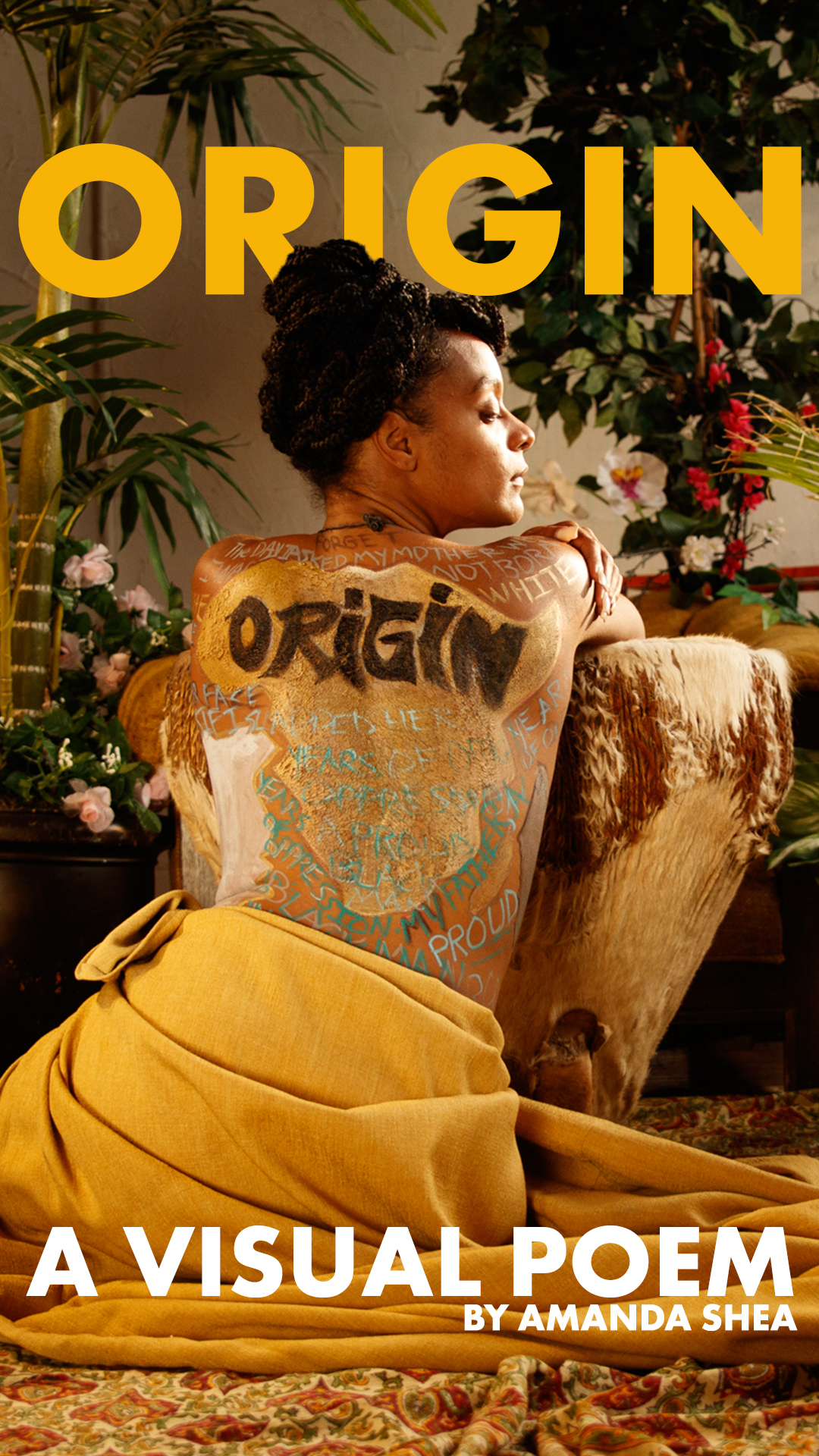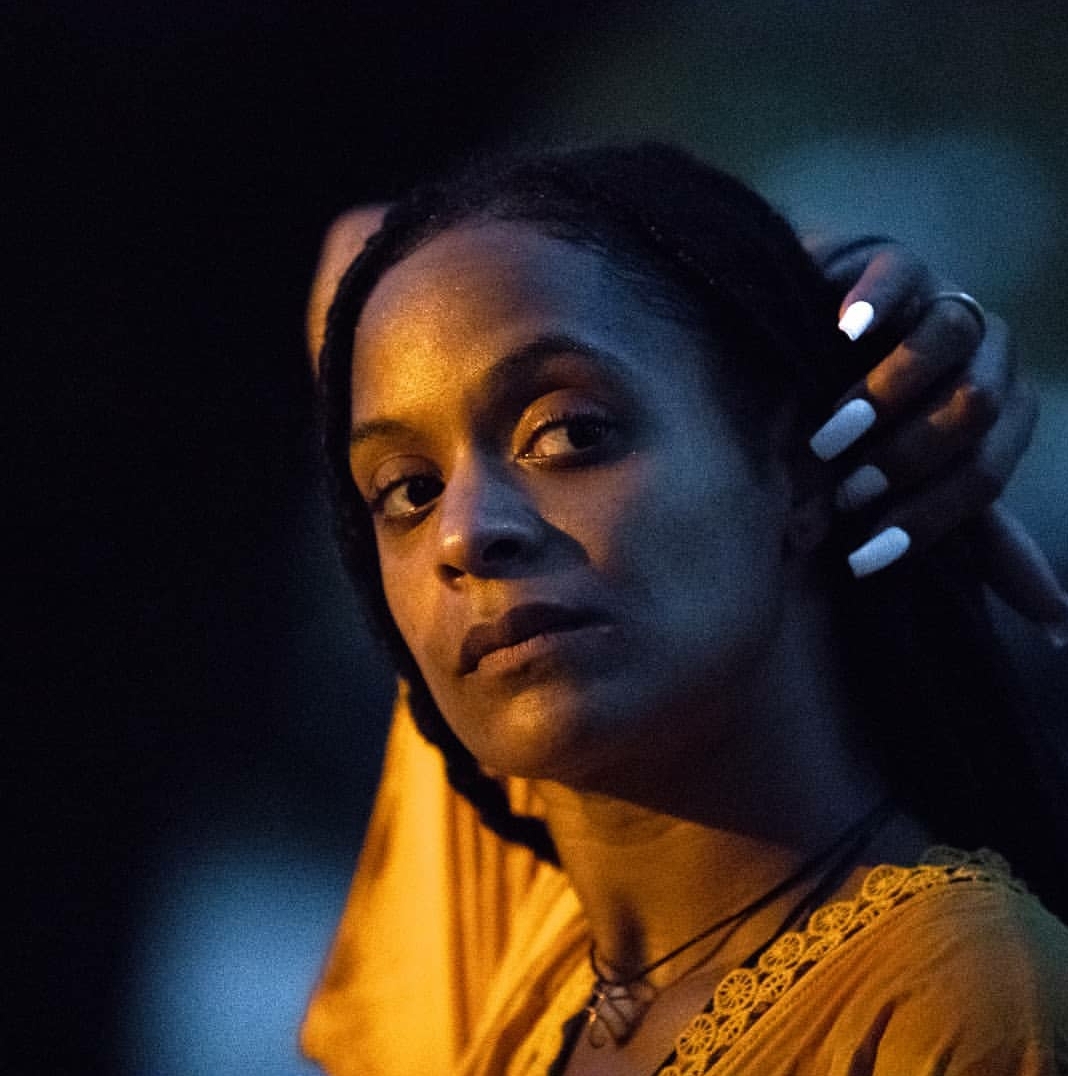 Photo by Tory Quinn
Photo by Tory Quinn Photo by Tory Quinn
Photo by Tory QuinnLauren: How do you identify? As a visual artist or audio artist, or something else?
Amanda: I’m a spoken word poet and for me, taking pictures is another form of expression of how I feel. Sometimes the pictures are derived from my poems. I’ll write about something just sitting in nature and then I’ll think about a visual; other times, my poems come from a visual.
In terms of the media for my artwork, I started by asking myself, ”How could somebody digest a piece of mine that may be disabled or suffer from social anxiety or is part of the ASL community?” which has expanded the ways in which I present my artwork.
Lauren: Could you tell folks a little bit more about your own creative practice and artistic process? And how you came into this practice?
Amanda: I have been writing since I was eight years old. I was a really huge “Are You There God? It’s Me, Margaret” reader and always thought I was like Margaret, so I wrote in my diary and journaled daily”
One year, I was grounded for an entire summer but that summer changed my life because not only did I keep writing every day, but I started listening to a lot of Brownstone, Xscape (XSCAP3), all of the old school 90s stuff and I would rewrite lyrics to my favorite songs. The poetry I would write was very personal stuff. So, at the time, I was grappling with childhood traumas of addiction with my mom and my dad because I grew up in a very addicted household.

Origin by Amanda Shea
Lauren: How did you go from writing poetry to performing spoken word?
Amanda: When I went to college at RCC Roxbury Community College, I met this group of amazing people called Club Hope and they started doing like poetry events at the school. To me, that was just incredible to watch because they’re spinning this off the top. The power in their performance and the emotion that they tapped into in order to share their work, I was just blown away.
I was writing a lot about stuff that I wasn’t sure if I really wanted to share and because I suffered from social anxiety, I started very slowly. I would host an open mic night at Dudley Cafe for HOPE INC. and listened to Matt Ganem, who is a recovering addict and would write from the perspective of an addict, which for me, I never really heard.
As someone who grew up in a family with those dynamics, you always think of yourself as alone in witnessing that journey so to hear someone kind of flip it on the other side, it was just so powerful. And from that moment on, I was like, maybe I could do this.
Lauren: You have a hand in so many different parts of the city with your artwork, managing other people’s work and mentoring young people. Where do your various roles intersect and how do they inform each other?
Amanda: Spoken Word starts with the writing, and I think hip hop, and any genre of music, starts with writing. So, when I’m working with the youth, I’m showing them this is the groundwork we need in order to write out our emotions as a healing mechanism and as a way of therapy.
It’s different than walking around with the harm and emotions in your body. How do we get that out of your body? How do we acknowledge whether we’re still triggered by it, still harmed by it? And how do we heal from what we just expressed? That’s where meditation comes in. That’s where public speaking is involved, because some of them do want to be able to share this experience with others but don’t really know how to do so.
By saying it, sharing it, or even just rereading it to ourselves for the next six months, poetry is a way of healing from it because you’re able to communicate it out loud.

Photo by Kay Piazza
Lauren: What’s something in the front of your mind as you present art to the community on your platform?
Amanda: I posed for a picture I did for sexual awareness month three years ago about what that means and what abuse can look like. I sent the picture to my mom and she called me crying, asking, “holy shit, what the hell happened?” And I’m like, “Mom, it’s just makeup. She really thought somebody hurt me because it was just that powerful.”
I posted it up and literally not even in an hour, I had three people from the community inbox me asking me to like put a censor on it. Immediately I was defensive because my way of thinking when I’m creating art is that there should be no censorship on this because women get abused all the time, sexually, physically, domestically.
But then I realized, no, Amanda, you should have put a trigger warning on that, because even though this is my way of bringing awareness and light to something that I’ve experienced along with other women and men, I don’t want to trigger people. It just comes back to respect for people.
Lauren: What type of effect do you want your art to have on people?
Amanda: These problematic things that we see in our society makes me write a poem. I started a poem about my brother calling his baby mama a b*tch. Like, I heard my brother call his baby momma a b*tch yesterday and it triggered me. We’ve been conditioned in society to use that word interchangeably, but it means different things to different people. If I’m a woman, being called a b*tch by a man means [being called] a female dog and it’s the most derogatory word you can be called in that moment. If a man is called a b*tch by another man, it’s not translated as a female dog, but as a form of weakness. So, it just got me thinking about how I can put this into a poem.
We’re quick to accuse others for being toxic and of toxic masculinity. Well, where does that stem from and where is it learned? It’s important to point out that we’re actually learning from spaces that we shouldn’t be learning from. These are the conversations that I talk with my youth about and these are conversations that I want to have as an open forum in my poetry, because they’re important to talk about.

Photo by Anson Frazier
Lauren: We’re at this pivotal moment when arts organizations of all shapes and sizes are starting to talk about justice as it relates to their work, their mission and the inequities inherent in the systems in which we operate. From this perspective, what does restorative justice in the arts look like to you?
Amanda: As the great Nina Simone once said, “it is our duty as artists to reflect the times.” I feel like when we’re talking about organizations, no matter is talking about justice, we need to be talking about what’s happening right now.
What that means is that you need to start dismantling the systematic oppression and the racial inequalities that your institution has upheld.
The missions of organizations and institutions need to operate from a restorative justice practice in the arts by educating, by displaying, by celebrating the things that are happening and highlighting it. That is their job, period.
So for me now, I call it protest art: ways of creating art in need of restorative justice but also in protest. So now we actually built a curriculum because me and Brandie Blaze have been talking so much about Activate ARTivism and what’s happening and how we can get our babies to organize.
Lauren: What are the biggest challenges for the Boston art scene right now in terms of how individuals, collectives and institutions can best support artists at this particular moment in time?
Amanda: What keeps me inspired is pushing for the growth of Boston against being siloed, conservative and segregated. We see that with even just how they allocate their money. And I think that’s what creates competition among people here and/or make people feel as though they need to leave because there aren’t not enough of these opportunities. They don’t talk about that in these big institutions.
Having these conversations and seeing people still moving and navigating through the scene gives me hope.
In this moment in time, we need to be cognizant of what’s going on in our social climate, because we’re not just facing a pandemic. Racism has been at an all time high, we need to be putting more of our efforts into that.